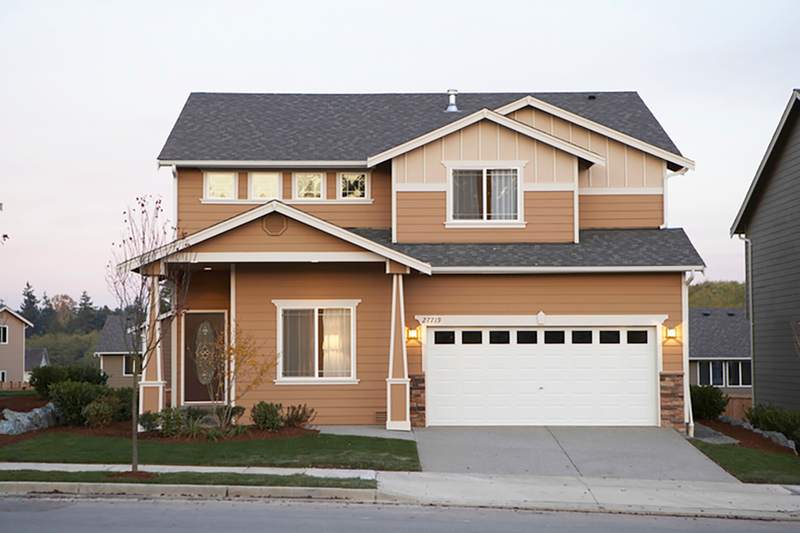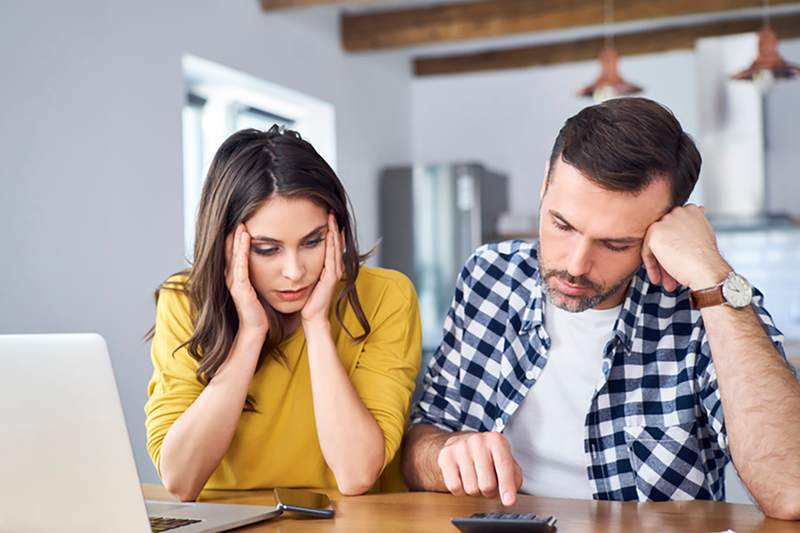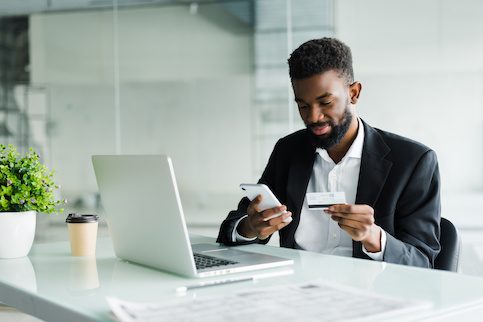If you’re getting a mortgage, you’re likely aware that there can be a ton of acronyms used throughout the process. One of the most confusing conversations involves explaining PMI vs. MIP. Private mortgage insurance (PMI) applies to conventional loans with less than 20% down payments, while mortgage insurance premiums (MIP) are associated with FHA loans.
What Is Mortgage Insurance?
Mortgage insurance helps protect a lender’s investment when a borrower defaults on a loan. Mortgage insurance allows lenders to offer loans with smaller down payments to lower a common barrier to homeownership or approve refinancing with lower amounts of equity. Certain loans with more flexible credit requirements also have a mortgage insurance requirement.
How Does Loan-To-Value Ratio (LTV) Affect Mortgage Insurance?
For loans with mortgage insurance requirements that change based on the down payment or equity amount, lenders often use your loan-to-value ratio (LTV) to explain your options. Think of LTV as the inverse of your down payment or equity amount. For instance, a 20% down payment means starting your loan with 80% LTV.
See What You Qualify For
Buy A Home
Discover mortgage options that fit your unique financial needs.

Refinance
Refinance your mortgage to have more money for what matters.
Tap Into Equity
Use your home’s equity and unlock cash to achieve your goals.
What Is PMI?
Private insurers provide private mortgage insurance (PMI) to mortgage lenders on conventional loans. Borrowers pay PMI in exchange for making a lower down payment. The insurance is required when the down payment or equity amount is less than 20%, and it compensates the lender if a borrower defaults on a loan.
How Do You Pay PMI?
There are several ways to pay PMI, including:
- Borrower-paid PMI (BPMI): The borrower pays the annual premium through monthly installments added to their mortgage. It’s the most common type of PMI.
- Lender-paid PMI (LPMI): The lender pays PMI upfront for the borrower and charges a slightly higher interest rate in exchange.
- Single-pay PMI: The borrower pays off the premium with a lump-sum payment at closing.
The insurance rate you pay will depend on what you negotiate with your lender and insurer and factors like your LTV and credit score, the loan term and how the property is occupied.
What Is MIP?
Mortgage insurance premiums (MIPs) are associated with Federal Housing Administration (FHA) loans. All FHA loan borrowers pay MIP regardless of their down payment or equity amount. As with conventional loans, FHA mortgage insurance compensates lenders in case of defaults. The MIP payments go directly to the FHA to fund and operate the mortgage insurance program and compensate lenders when necessary.
How Do You Pay MIP?
There are two types of MIP, and the FHA sets their rates.
- Upfront MIP (UFMIP): A one-time payment usually made at closing that typically equals 1.75% of the total loan amount.
- Annual MIP: The annual payment is based on the total loan amount, the loan term and the amount of the down payment. The fee can range from 0.15% to 0.75% of the outstanding loan amount. The premium is usually split into monthly payments and added to your monthly mortgage payment.
See What You Qualify For
You can get a real, customizable mortgage solution based on your unique financial situation.
What Are The Differences Between PMI And MIP?
The biggest difference between PMI and MIP is that PMI is associated with conventional loans and MIP is associated with FHA loans – which is a handy way to know which one you have. But they have other distinctions that separate them, too.
Upfront Costs
FHA loans require a standard upfront mortgage insurance payment that’s 1.75% of the total loan amount. You can pay the premium at closing or roll it into your mortgage loan.
PMI doesn’t require an upfront payment. However, if you opt for single-pay PMI, you’ll pay the entire premium upfront at closing.
MIP And PMI Annual Costs
The FHA sets MIP rates based on the size of your loan and your loan’s LTV. As of 2023, for a borrower with a 30-year FHA mortgage:
- If your LTV is 90% or lower: Your annual MIP will be 0.5% of the total loan amount for 11 years.
- If your LTV is 90% – 95%: Your annual MIP will be 0.5% for the life of the loan.
- If your LTV is greater than 95%: Your annual MIP will be 0.55% for the life of the loan.
For example, if you take out an FHA loan for $300,000 and make a 3.5% down payment, you’ll pay $1,650 a year or $137.50 a month for the life of the loan.
Lenders set PMI rates according to the size of a loan and a borrower’s creditworthiness. Typically, PMI costs are in the 1% – 2% range of your total loan amount.
If you take out a $300,000 conventional loan and your PMI is 1.5%, your annual PMI would be $4,500, and your monthly mortgage insurance payment would be $375.
Ability To Cancel
You can ask your lender to stop charging PMI when your LTV reaches 80%, but it’s automatically canceled once your LTV hits 78%. However, the equity threshold to cancel LTV may be higher for a multifamily or investment property.
Most FHA borrowers pay FHA mortgage insurance for the entire loan term. The exception is when it’s canceled after 11 years because the borrower made at least a 10% down payment.
It’s important to note that the life of the loan doesn’t mean the life of the home. One way FHA borrowers with permanent MIP remove it is to refinance into a conventional loan after they’ve reached the 20% equity threshold to avoid paying PMI when they refinance.
MIP Vs. PMI: The Pros And Cons
From your credit score to your debt-to-income ratio (DTI), several factors will influence which mortgage you choose. PMI and MIP are also factors that can play a part in determining which loan is right for you. That’s why it’s important to understand their pros and cons.
PMI Pros
PMI allows lenders to expand access to conventional loans for many borrowers while protecting themselves from any financial risk they assume. Here are the benefits:
- Flexible down payment: With PMI, lenders can offer conventional loan options for 1-unit primary properties with only a 3% – 5% down payment, depending on a borrower’s qualifying income and first-time home buyer status. Without PMI, lenders would require 20% down payments or higher.
- Removable mortgage insurance: PMI can be removed based on the home’s original value or current market value.
- Lower interest: Borrowers with excellent credit may be able to access lower interest rates with conventional loans than FHA loans because conventional loans have stricter qualifying terms.
PMI Cons
PMI certainly has a few drawbacks, including:
- Competitive qualifications: PMI is only associated with conventional And conventional loans typically have strict qualification criteria, including a higher credit score and lower DTI ratio requirement. Conventional loans can be harder to qualify for than FHA loans.
- Additional monthly payment: If you have borrower-paid PMI, you’ll have an additional fee escrowed every month for your PMI payment until you reach 20% equity in your home.
- Lender-paid PMI higher rates: If your lender covers your PMI to help you avoid the additional monthly payment, you’ll pay slightly higher interest on the
MIP Pros
Here are some advantages of MIP:
- Low down payment requirement: Because the FHA guarantees it will compensate lenders if a borrower defaults, lenders are more willing to offer home loans with lower down payments.
- Easier to qualify: With MIP, lenders can offer lower interest rates to borrowers who would have usually been offered less favorable terms due to a smaller down payment or past credit issues.
MIP Cons
MIP also has a few disadvantages, including:
- Harder to remove: Unless you make a 10% down payment, the monthly mortgage insurance premium will be a permanent fee on your FHA loan.
- Fixed premiums: You may be able to negotiate PMI with your lender. However, the FHA sets the UFMIP and annual MIP rates, and you can’t negotiate them.
The Bottom Line
Mortgage insurance payments have their advantages and disadvantages. While they may increase a borrower’s monthly mortgage payment, they also help millions of prospective home buyers become homeowners with smaller down payments.
See What You Qualify For
You can get a real, customizable mortgage solution based on your unique financial situation.

Kevin Graham
Kevin Graham is a Senior Writer for Rocket Companies. He specializes in economics, mortgage qualification and personal finance topics. As someone with cerebral palsy spastic quadriplegia that requires the use of a wheelchair, he also takes on articles around modifying your home for physical challenges and smart home tech. Kevin has a bachelor's degree in journalism from Oakland University.












